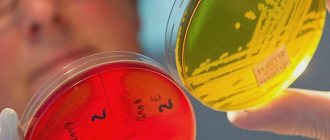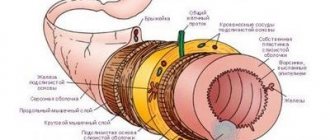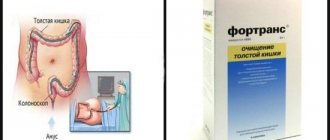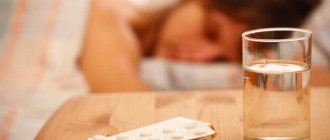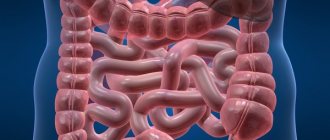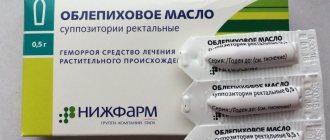Last updated November 17, 2020 at 00:59
Reading time: 4 min
The totality of bacteria inhabiting the human body has a common name - microbiota. In a normal, healthy human microflora there are several million bacteria. Each of them plays an important role for the normal functioning of the human body.
In the absence of any type of beneficial bacteria, a person begins to get sick, the functioning of the gastrointestinal tract and respiratory tract is disrupted. Beneficial bacteria for humans are concentrated on the skin, in the intestines, and on the mucous membranes of the body. The number of microorganisms is regulated by the immune system.
- 3.1 Related articles
What are beneficial bacteria and their functions
The human body contains from 500 to 1000 species of bacteria. The optimal balance between them and the human body has been formed over centuries. The total weight is up to 4 kg, 3 of which are in the intestines. The remainder inhabits the skin, genitourinary tract and other body cavities.
Lactobacilli and bifidobacteria account for about 60% of the intestinal microflora. In addition to them, the symbiosis includes streptococci, enterobacteria, non-pathogenic protozoa and fungi. Under normal conditions, the composition is constant. Under the influence of harmful factors, there is a deficiency of some species and excessive reproduction of others.
What about storing probiotics?
The safety of bacteria is a very important point, since the activation and onset of growth of microorganisms can lead to competition for food resources, if any are present in the probiotic. When the resources are exhausted, the bacteria will die inside the capsule or vial.
Bacteria must be stored in a place protected from light and heat. Storage requirements depend on the presence or absence of a protective shell, production technology, and packaging.
Microbes in sachets are usually stored at room temperature, the same applies to capsules. Liquid probiotics – in the refrigerator.
But there are exceptions to the rules. So let's look at the instructions.
Types of beneficial bacteria
Beneficial bacteria for humans are divided into lactobacilli and bifidobacteria. The former are the most important component of the intestinal microflora.
They also actively reproduce on mucous membranes. During the life of lactobacilli, lactic acid, bacteriocins and lysozyme are released. With their deficiency, dysbiosis quickly develops in the intestines. Taking antibiotics has the greatest harmful effect on lactobacilli.
Bifidobacteria are distinguished by the fact that their reproduction occurs in the absence of oxygen. Homemade yoghurts do not contain them. Therefore, to restore the number of bifidobacteria, it is necessary to take drugs such as Bifiform, Probifor, Florin Forte or regular Bifidumbacterin. Lactic acid products from stores are further enriched in production.
Dyes, preservatives, flavors, GMOs
If the instructions say that the product does not contain preservatives, flavors, or artificial colors, this is a plus (of course, if the manufacturer is not lying), because The more of this in the probiotic, the higher the risk of allergic reactions.
And in some instructions you can even see the following phrase: “does not contain genetically modified microorganisms.”
You have all heard the term “GMO” - these are genetically modified organisms, the genotype of which has been artificially changed using genetic engineering methods.
For example, transgenic products look like the picture and do not spoil for a long time.
Gastrointestinal bacteria are delicate creatures that do not like drying out, are afraid of gastric juice, and die under the influence of antibiotics. To influence the properties of bacteria and expand their spectrum of action, some probiotic manufacturers also use genetic engineering.
It is difficult to predict what this may lead to, and what surprises the mutant bacteria that enter the body may present.
The VETOM product you mentioned in the comments is precisely from this area. It is written that it contains a “recombinant” strain of the bacterium Bacillus subtilis, i.e. obtained through genetic engineering. It is positioned as a remedy “for everything,” meanwhile, I don’t know how it is now, but previously it was registered for use exclusively in veterinary medicine, since the consequences of human use of GMOs can be the most unpredictable.
Beneficial bacteria for the stomach
Beneficial microorganisms for humans that inhabit the intestinal tract cannot tolerate the highly acidic environment of the stomach. Most of them die before reaching the target area.
Preparations containing them are usually produced in a protective coating that is soluble only in the intestine. The environment in this zone changes from acidic to slightly alkaline. However, during exacerbation of gastritis, for example, beneficial bacteria can bring significant relief.
To preserve the viability of microorganisms and to quickly relieve pain, there are highly effective drugs - proton pump blockers, or drugs to reduce acidity. Most of them are made on the basis of omeprazole and have an affordable price for buyers. A single dose per day provides a pronounced reduction in acidity.
Beneficial and harmful bacteria for humans
While taking these drugs, bacteria will be released in the stomach cavity and will have a beneficial effect on its mucous membrane. In combination with concomitant medications, exacerbation of gastritis can be quickly stopped and a new relapse can be prevented. And a note to people with a chronic form of the disease - natural honey has regenerating and healing properties.
Drinking a few tablespoons of pure honey daily on an empty stomach will provide effective prevention in the future. The limitation of such therapy applies to people with a tendency to develop allergic reactions and with instability of blood glucose levels, as well as chronic diabetics.
Prevention of dysbacteriosis
Living in urban conditions with poor ecology and nutrition significantly increases the risk of dysbiosis - an imbalance of bacteria in the human body. Most often, the intestines suffer from dysbiosis, less often - the mucous membranes. Signs of a lack of beneficial bacteria: gas formation, bloating, abdominal pain, upset stool. If the disease is neglected, vitamin deficiency, anemia, unpleasant odor of the mucous membranes of the reproductive system, weight loss, and skin defects may develop.
Dysbacteriosis easily develops even when taking antibiotic drugs. To restore the microbiota, probiotics are prescribed - compositions with living organisms and prebiotics - preparations with substances that stimulate their development. Fermented milk drinks containing live bifidobacteria and lactobacilli are also considered beneficial.
In addition to therapy, beneficial microbiota responds well to fasting days, consumption of fresh fruits and vegetables, and whole grains.
Beneficial bacteria for the intestines
Beneficial bacteria for humans multiply effectively in the intestines as a result of taking special probiotics and prebiotics to quickly populate the internal cavity of the intestine.
Probiotics are the live bacteria themselves. Prebiotics are a nutrient medium for their rapid reproduction. They are not digested, but are fermented by beneficial microorganisms. Such substances are distinguished by the fact that the simpler their chemical structure, the faster they are processed by the intestinal microflora.
The most popular prebiotics include:
- inulin – plant polysaccharide;
- lactulose is a prebiotic consisting of fructose and galactose molecules;
- soluble fiber – pectins, chitosan, guar gum;
- sweeteners – xylitol, sorbitol;
- extracts of carrots, potatoes, pumpkin, corn, rice and yeast;
- polyunsaturated fatty acids.
The most accessible prebiotic is lactulose. Pharmacologically, it is intended to facilitate the act of defecation, i.e. laxative. Immediately after completing a course of antibiotic treatment, you should start taking it with minimal dosages, then adjust the single volume taking into account the individual reaction of the body.
Lactulose has the ability to inhibit the growth and reproduction of salmonella and shigella. Does not reduce the absorption of vitamins. With constant use, a natural addiction is formed, the laxative effect decreases. Therefore, there will be fewer unpleasant consequences in the form of diarrhea.
The best probiotics to restore gut microflora help eliminate all these symptoms
A normal reaction of the body is the occurrence of flatulence in the first days of taking it. Then addiction occurs, after a few days the condition returns to normal. In addition to increased gas formation, abdominal pain, nausea, and vomiting may occur. In case of lactose intolerance, the drug is prescribed with caution.
Alive, but sleepy...
Most manufacturers write that the bacteria in their probiotic are the most alive of all living things, so it really “works.”
But in most products with “live” bacteria, the latter are dried and enclosed in a capsule or sachet, where they “sleep”.
If they were in a capsule, like in an armored personnel carrier, they reached the intestines intact, and then, after dissolving the capsule, they scattered vigorously throughout it, it would be wonderful.
But, firstly, not all capsules dissolve in the intestines. Many are already in the stomach, therefore, a significant part of the microbes die.
Although there are several acid-resistant bacteria: L. plantarum, L. acidophilus, L. casei, L. rhamnosus.
Knowing this, and having read the composition, you can now, at least partially, independently assume the effectiveness of the probiotic.
One day I decided to test several drugs and dietary supplements for intestinal microflora, including Linex, on whose website it is written about a certain protective matrix, thanks to which bacteria remain alive when passing through the stomach.
After two hours of soaking one Linex capsule in gastric juice, the army of invisible front fighters contained in it thinned out 1000 times! I believe that if it were not for the stomach acid-resistant L. Acidophilus, this figure would be much higher.
And in sachets, sleepy bacteria, as a rule, are completely deprived of protection, unless microencapsulation technology like modern enzymes is used. But the manufacturer, of course, will write about this.
Secondly, as I said last time, it takes up to 8-10 hours for bacteria to awaken from sleep. And it’s not a fact that they will all wake up.
Therefore, much more effective are liquid probiotics that contain not dried, but actually living bacteria that begin to work from the first minutes of entry into the digestive tract: Euflorin, Normoflorin, Biovestin.
Rating of drugs with beneficial bacteria
Beneficial bacteria for humans contained in some medications can be taken at the very beginning of a course of antibiotic treatment. But you should not combine them together at the same time, even if this is allowed according to the instructions. It is best to take a maximum break between doses and temporarily double the recommended dosage in case of chronic tendency to dysbiosis.
Rela Life
A very effective drug for newborns. In all children just born, the intestines are practically sterile. Immediately after passing through the birth canal, the baby picks up some of the bacteria from the mother. The speed and normal formation of the child’s own intestinal microflora depends on the balance.
For the most successful result of this process, there is the drug Rela Life in the form of oil drops for oral administration. The content of live lactobacilli Lactobacillus reuteri Protectis in 5 drops is 108 CFU.
The drug is available in 5 ml dark glass bottles. For older children, chewable tablets of 30 pieces in 1 package are offered. The bacteria content in 1 tablet is 107 CFU.
Very young children should carefully place the required number of drops directly into their mouths, and then offer them to the breast or a bottle of formula.
Linex
The drug is available in the form of capsules of 16, 32 or 48 pieces in 1 package. For children, it comes in 1.5 gram bags, 20 pieces in 1 package.
1 Linex capsule contains lyophilized bifidobacteria powder:
- acidophilus (sp. L. gasseri) not less than 4.5x107 CFU;
- B. infantis not less than 3.0×107 CFU;
- faecium not less than 4.5×107 CFU - 5.04 mg.
For children under 2 years old – 1 capsule 3 times a day. For children 2-12 years old – 1-2 capsules 3 times a day. For adults – 2 capsules 3 times a day. Concomitant use with hot food or alcohol is not allowed. Capsules can be opened and the contents mixed with a small amount of cool liquid.
Duphalac
The most common lactulose-based drug in pharmacies is Duphalac. Manufacturer: Abbott Biologicals B.V., Netherlands. Outwardly it looks like a thick, transparent syrup with a sweet taste. Available in bottles of 200, 500 and 1000 ml.
The dosage depends on the age and the individual response of the patient:
| Age | Initial dose, ml | Maintenance dose, ml |
| Children under 3 years old | 15-45 | 10-25 |
| Children 3-6 years old | 15 | 10 |
| Children 7-14 years old | 5-10 | 5-10 |
| Adults | 5 | 5 |
The full clinical effect occurs after 2 days.
Increasing the frequency of doses and dosages should be done no earlier than this period. Lactulose is a disaccharide that contains galactose and fructose molecules. Chemically, it is a structural isomer of lactose, milk sugar. It does not occur naturally in nature. It acts by hyperosmosis of water into the intestines from surrounding tissues. It is not absorbed at all by the body. Increases bile secretion. It has a positive effect not only on peristalsis, but also improves liver function in encephalopathy.
Hilak Forte
The drug is available in glass bottles with a capacity of 30 and 100 ml. The line has also been expanded with sachet packs of 1.1 ml and 2.2 ml, 30 pieces each. The product is a liquid solution of active substances - metabolic products of enterococci and lactobacilli. Biologically restores the balance of microflora and preserves the physiological functions of the intestinal mucosa.
The composition also includes biosynthetic lactic acid to restore normal acidity levels in the gastrointestinal tract, regardless of the natural production of hydrochloric acid in the stomach.
Stimulates the synthesis of B vitamins. The short-chain volatile fatty acids included in the composition restore damaged intestinal microflora and stimulate the regeneration of the epithelium of the intestinal walls. Strengthens the body's immune response.
Recommendations for use:
- adults – 40-60 drops;
- children – 20-40 drops;
- infants – 15-30 drops.
Take the drug 3 times a day after diluting it in a small amount of liquid (except milk). After you feel better, the dose can be halved. In case of overdose, no emergency measures need to be taken other than routine medical supervision.
In case of simultaneous use with antacids, neutralization of lactic acid is possible. Contraindications – individual hypersensitivity, lactose intolerance, lactase deficiency. Shelf life after opening the bottle is 6 weeks. Store at room temperature.
Lactobacterin
Lyophilisate for preparing a solution. The composition is a microbial mixture of antagonistically active live lactobacilli in combination with a protective sugar-gelatin medium. Inhibits pathogenic and opportunistic microflora in the intestines, including staphylococci, enteropathogenic E. coli and Proteus. Normalizes digestion and improves metabolism in the body.
Regimen for taking oral forms 2-3 times a day 30-40 minutes before meals:
- infants – 2-3 doses;
- children over 1 year and adults – 5 doses over 1 week;
- for protracted and recurrent forms of disease - up to 1 month.
For the treatment of diseases of the oral mucosa - irrigation with a solution of 5 doses 2-3 times a day for 2 weeks. Apply intravaginally by application using gauze or cotton swabs.
The special importance of healthy microflora of vaginal secretion is typical for pregnant women before childbirth, since the child, passing through the genital tract, first becomes acquainted with microorganisms. Therefore, it is imperative that every effort be made to normalize the microflora in anticipation of childbirth.
Bifidumbacterin
Beneficial bacteria for humans are available in several dosage forms:
- 10 packages of 5 doses;
- 10 bottles of 5 doses;
- 30 packages of 5 doses;
- 30 tablets of 5 doses;
- 10 capsules of 5 doses;
- Bifidumbacterin Forte in capsules and bags.
Preparations from different manufacturers differ in the total living biomass of bacteria. Most forms available in pharmacies contain from 107 to 5×107 CFU. An important rule for preparing the solution is to never use water with a temperature above 40°C.
In addition to these forms, there are also vaginal and rectal suppositories. Their use is especially important during pregnancy and before childbirth. B vitamins increase activity, antibiotics reduce it.
Acipol
1 capsule of the drug contains at least 107 live lactobacilli and 0.4 g of kefir grain polysaccharide. The mixture is a lyophilized, living biomass - an antagonist of flora pathological for humans. Restores the natural environment in the intestines and improves immunity.
Acipol is recommended for use by children from 3 months and adults in combination with concomitant therapy of the underlying disease. No side effects were recorded after taking the recommended dosages.
Indications:
- acute intestinal infections (rotavirus, salmonellosis, dysentery, etc.);
- chronic gastrointestinal diseases;
- long-term antibiotic therapy;
- weight deficiency and insufficient rate of weight gain;
- chronic and recurrent pathologies of the upper and lower respiratory tract;
- atopic dermatitis and allergic reactivity;
- correction of the body's immune response.
For infants and up to the age of 3 years, open the capsule and mix the contents with milk or water - 1 piece 2-3 times a day. All other age groups are prescribed 1 capsule 3-4 times a day 30 minutes before meals.
The duration of therapy for acute intestinal infections is 5-8 days. Longer courses are recommended for weight loss caused by gastrointestinal pathologies. For prophylaxis, the drug is taken for 2 weeks, the break between courses is 1 month.
Evitalia
Classic packaging includes 10 glass bottles with 0.3 g of powder. The composition includes freeze-dried strains of Lactococcus lactis, Streptococcus thermophilus, Lactobacillus acidophilus, Lactobacillus helveticus, Propionibacterium freudenreichii ssp. shermanii
Contains a patented complex of microorganisms for the active restoration of the natural intestinal microflora. Each person has his own genes that have maximum compatibility with specific bacteria. The main principle of treatment with this drug is not the introduction of foreign flora, but the renewal and reproduction of one’s own.
Recommendations for use:
- adults: 1 bottle 3 times a day 30 minutes before meals;
- children over 3 years old – 1 bottle per day 30 minutes before meals;
- Duration of therapy is 2-4 weeks.
The contents of 1 ampoule are dissolved in water at room temperature or warm milk. You can also make yogurt at home using this mixture. All rules and ratios of components are described in detail in the instructions for the drug.
Narine
The remedy was invented about 50 years ago by an Armenian doctor. Contains live biomass of Lactobacillus acidophillus bacteria. The package includes 10 packets of 200 mg powder. The content of Lactobacillus acidophilus microorganisms in acidophilic form is 109 CFU/g.
It is used as a starter for preparing fermented milk products or in its pure form, 2-3 packets per day for 20-30 days. The cost in pharmacies is about 150-200 rubles per package.
Normobact L
Unlike the classic Normobact, this drug does not require storage in the refrigerator.
It includes:
- Lactobacillus rhamnosusGG - 4x109 CFU;
- maltodextrin - 2155 mg;
- fruit oligosaccharides - 800 mg;
- silicon dioxide (E 551) - 5 mg.
Fructooligosaccharides are included as a nutrient medium to prolong the life of beneficial microorganisms and for their further reproduction in the intestines. Children from 1 month to 3 years – 1 sachet per day. For older children and adults – 1-2 packets per day. The powder is mixed with 100 ml of liquid and drunk after complete dissolution.
Breastfed infants express milk and give the solution to drink using a bottle. Normobact should be taken immediately after preparing the mixture. Storage is not permitted. The cost is relatively low. 10 packages of 3 g each have a price of about 500 rubles.
The importance of bacteria beneficial to humans is difficult to overestimate, since without them there will be problems with housing and communal services and attack harmful microorganisms. The main task is not to upset the balance and make every effort if unpleasant symptoms of dysbiosis appear.
Article design: Mila Friedan
The ideal probiotic: what should it be?
Studying this topic and reflecting on it, I came up with 6 main points and 5 additional ones.
First I’ll just list them, and then I’ll go into more detail.
Key Features of an Ideal Probiotic
First. An ideal probiotic should contain truly living bacteria, which will remain so after passing through the aggressive environment of the gastrointestinal tract, and which will reach their location without loss. As you remember, each bacteria has its own.
Second. Bacteria must reach their permanent residence not half-dead, but active, so that they can immediately begin doing what they came to the digestive tract for. Delay is literally like death for them: after a few hours they will be removed from the intestines due to contractions of its walls.
Third. Alien bacteria must be able to attach themselves to the intestinal wall, otherwise they will not be able to form colonies and work.
Fourth. Considering that in most cases people come to you with complaints, and not with the results of a stool test for dysbiosis, it is desirable that the composition of the probiotic be combined.
Fifth. There must be a sufficient number of bacteria so that their sorrowful work is not lost and is noticeable to the owner.
Sixth. The bacteria must be natural, i.e. It is normal to live in our digestive tract, otherwise foreigners themselves can cause an infection in case of immunodeficiency.
That is why in the instructions for some products for intestinal microflora one can see “immunodeficiency states” as contraindications.
Additional advantages:
- Bacterial resistance to antibiotics. This is important so that a probiotic can be prescribed for the prevention of antibiotic-associated diarrhea at the same time as an antibiotic.
- No artificial colors, preservatives, flavors, or genetically modified components.
- Convenient release form.
- Availability of several forms of release for different target groups of buyers.
- No special storage and transportation conditions.
Now let's look at it in order.
Prebiotic or probiotic?
Prebiotics, unlike probiotics, are good because they do not contain microbes, but only food for them. They pass through the digestive tract unhindered and can be recommended in combination with an antibiotic.
But there are nuances.
Products containing only the prebiotic Lactulose are used mainly as laxatives. So you can’t offer them for diarrhea.
Lactofiltrum contains a sorbent and the same Lactulose, so I wouldn’t recommend it for diarrhea either, because... Lactulose increases the volume of intestinal contents, enhances intestinal motility, so it will leak more than before.
Perhaps this is why Lactofiltrum is now positioned as a means to improve skin condition.
Another prebiotic Eubicor contains wheat bran, i.e. fiber, which makes it especially suitable for constipation.
In general, in my opinion, this is a good preventive measure for the normal functioning of the gastrointestinal tract.
Medicines based on mold against microbes
Many people have experienced the negative effects of mold:
- spoiled food;
- destruction of fabric and wood;
- infection of plants and seeds.
- mold in the premises.
But not everyone knows that medicines are made from mold to fight microorganisms. The production of metabolites by mold fungi is used in the manufacture of many antibiotics. The very first and well-known drug, Penicillin, was obtained from mold. Antibiotics of the cephalosporin group were isolated in 1948 from the mold Cephalosporium acremonium and used against typhus. Isolated from mold, cyclosporine is a powerful immunosuppressive drug. It is used in transplantation, organ transplantation and other operations.
Many drugs isolated from mold are toxic and should be taken strictly as directed by a doctor.
Antidepressants
Antidepressants are drugs that are used to treat depression.
There are different types of these medications, but the most common are serotonin and/or norepinephrine reuptake inhibitors. It is known that the intestinal microbiota influences the production of serotonin, gamma-aminobutyric acid (GABA) and dopamine - neurotransmitters on which our mood and well-being depend. A comparison of microbiota samples from depressed patients and healthy adults showed that the former had more of the bacterium Flavonifractor. Another study found that the microbiota of people with depression who took antidepressants contained less Coprococcus and Dialister bacteria.
Test tube (in vitro) studies demonstrate antibacterial properties of anti-depression drugs. The effect of antidepressants has also been studied in mice. In them, the drugs worsened the diversity and changed the composition of intestinal bacteria.
However, this study should be treated with caution: the antidepressants were injected directly into the abdomen to achieve certain concentrations, so the stress that the animals experienced may have influenced the results. Researchers suggest that part of the beneficial effects of antidepressants is due to effects on the microbiota.
